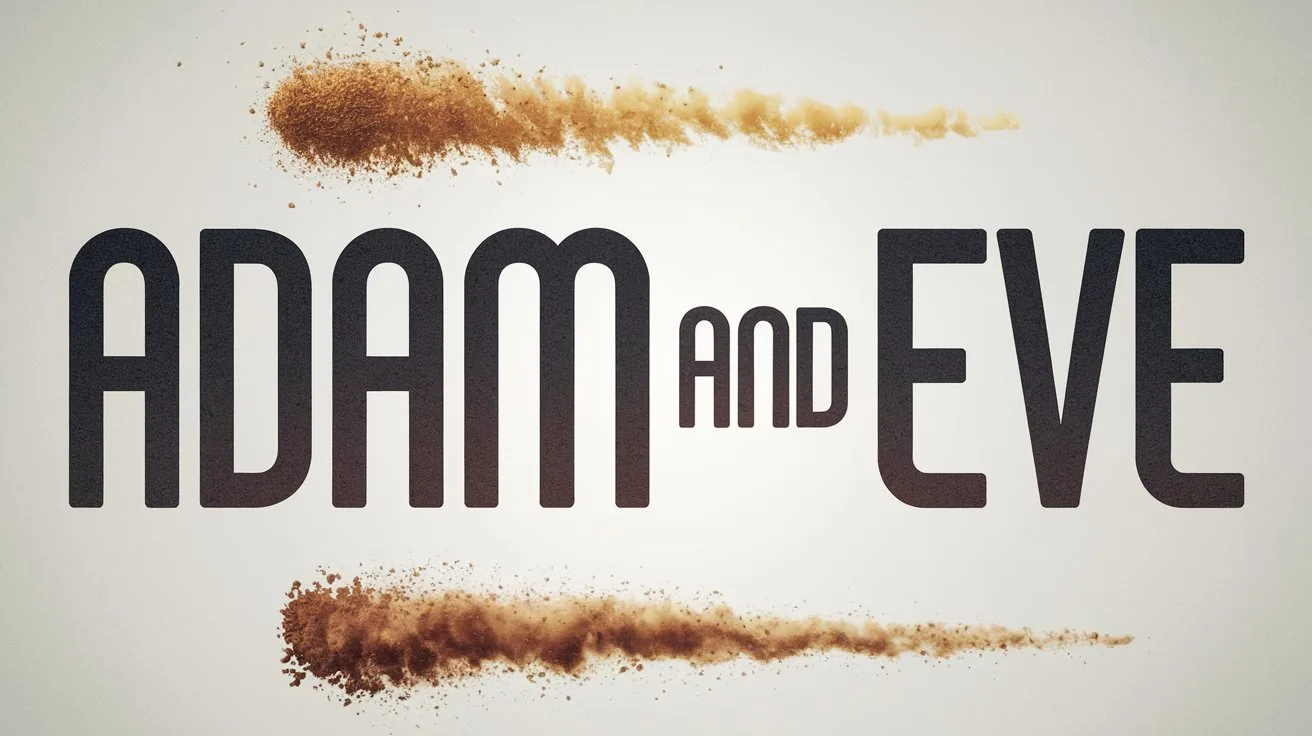The creation of Adam and Eve stands as a testimony to God’s divine craftsmanship, intentional design, and overall purpose for humanity. Unlike the rest of creation, which was spoken into existence, mankind was uniquely formed by God’s hands and made in His image.
God Made Adam from the Dust
“And the LORD God formed man of the dust of the ground, and breathed into his nostrils the breath of life; and man became a living being.” (Genesis 2:7)
Unlike the animals, which were created by divine command (Genesis 1:24-25), Adam was personally formed by God from the dust. The Hebrew word for “formed” (yatsar) describes the action of a potter shaping clay, emphasizing care, purpose, and craftsmanship.
Dust is lowly, fragile, and temporary; yet in God’s hands, it became something extraordinary: a living being, made in His image. This shows that our worth is not in what we are made of but in who made us and who breathed life into us.
God Breathed Life into Adam
After forming Adam’s body, God breathed into his nostrils the breath of life.
This is the direct impartation of life from God Himself: a life that is spiritual, not just physical. The word for breath (nĕshamah) is used elsewhere to describe the spirit and intellect of man (Job 32:8). This means that:
Mankind is not just flesh but has a soul and spirit, unlike animals.
Life itself belongs to God, and without Him, there is no existence.
Just as God breathed life into Adam, Jesus later breathed on His disciples, signifying the new life of the Holy Spirit:
“And when He had said this, He breathed on them, and said to them, ‘Receive the Holy Spirit.'” (John 20:22)
From the very beginning, true life comes from God alone.
Mankind Was Made in God’s Image
“Then God said, ‘Let Us make man in Our image, according to Our likeness…'” (Genesis 1:26)
Being made in the image of God means that mankind is distinct from all other creation. This image (tselem) refers to our spiritual, moral, and intellectual nature (not our physical bodies).
What Does It Mean to Be Made in God’s Image?
Spiritual Nature
– We have a soul and spirit that allows us to worship and have fellowship with God (John 4:24).
Moral Nature – We understand right and wrong, reflecting God’s righteousness (Romans 2:15).
Intellectual Nature – We have reason, creativity, and wisdom (Colossians 3:10).
Authority – We were given dominion over the earth as God’s representatives (Genesis 1:28).
Though sin has marred this image (Genesis 3), through Christ, we are being restored into the fullness of His likeness (Romans 8:29).
God Created Woman from Man’s Rib
“And the LORD God caused a deep sleep to fall on Adam, and he slept; and He took one of his ribs, and closed up the flesh in its place. Then the rib which the LORD God had taken from man He made into a woman, and He brought her to the man.” (Genesis 2:21-22)
After creating Adam, God declared:
“It is not good that man should be alone; I will make him a helper comparable to him.” (Genesis 2:18)
Eve’s creation was deliberate and purposeful (she was not an afterthought) but a necessary complement to man. Eve was created as a helper (Hebrew: ezer), meaning she was a strength and support, not an inferior being. This same word is used to describe God as our helper (Psalm 33:20), showing that helping is a role of honor, not weakness.
Man and woman were created to work together in unity (each fulfilling their God-given role):
Man was created to lead, protect, and provide (1 Corinthians 11:3).
Woman was created to be a nurturer, encourager, and support (Proverbs 31:10-31).
Together, they reflect God’s divine order and the relationship between Christ and the Church (Ephesians 5:22-25).
From Dust We Came, and to Dust We Shall Return
Because of sin, death entered the world; and the same dust that gave us life would become our grave.
“In the sweat of your face you shall eat bread Till you return to the ground, For out of it you were taken; For dust you are, And to dust you shall return.” (Genesis 3:19)
Adam’s name itself comes from adamah (Hebrew for “earth” or “ground”), reminding us that our bodies are temporary. Yet, in Christ, we have the promise of eternal life and resurrection.
“And as we have borne the image of the man of dust, we shall also bear the image of the heavenly Man.” (1 Corinthians 15:49)
Though our flesh returns to dust, those who believe in Jesus will rise again in glory (1 Thessalonians 4:16-17).
My Final Thoughts
The creation of Adam and Eve reveals God’s purpose, design, and divine love for His humans.
God formed Adam from dust, giving him life by His breath.
God created Eve from Adam’s rib, making her a companion and helper.
Mankind was made in God’s image, to reflect His glory.
Though sin brought death, Christ brings eternal life.
The account of creation reminds us that we were not made for ourselves but for God. Our lives, our marriages, and our purpose all find their meaning in Him.
One day, this body will return to dust (but for those in Christ) the real life begins in eternity.




